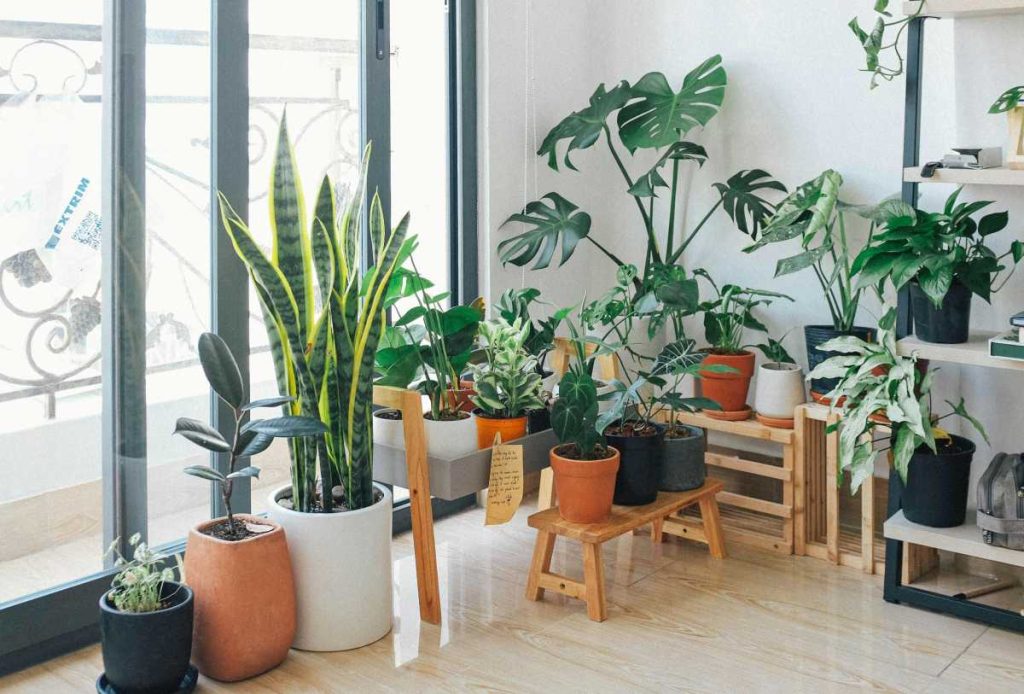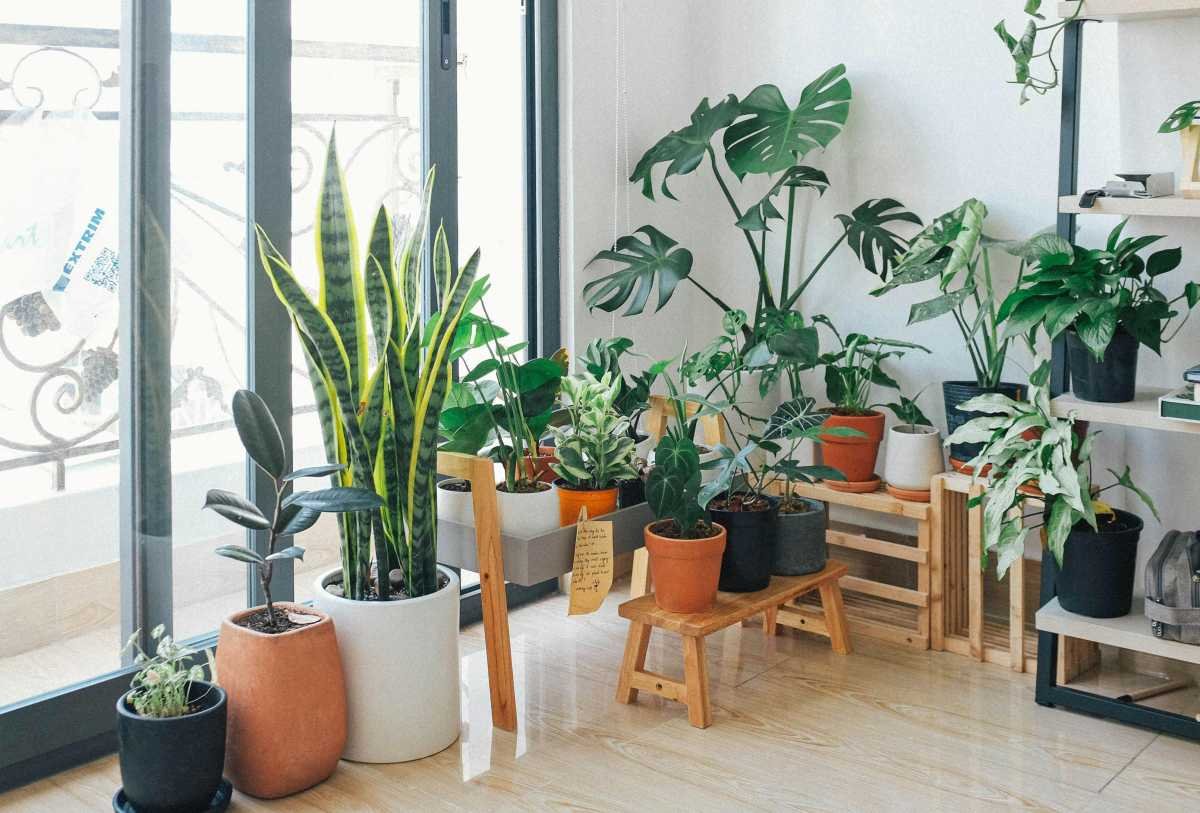Your home is more than just a place to sleep and store belongings—it’s your personal sanctuary. The environment you live in greatly impacts your physical and mental well-being, so creating a home that promotes health and wellness can make a huge difference in your life. From introducing natural elements to creating spaces for relaxation, here are 12 ways to transform your home into a place that supports and enhances your well-being.
1. Incorporate Indoor Plants for Fresh Air

Indoor plants not only add a splash of green but also help purify the air by absorbing toxins and releasing oxygen. Studies show that plants can improve indoor air quality and even reduce stress, creating a soothing atmosphere.
Tip: Start with easy-to-care-for plants like snake plants, pothos, or spider plants. Place them in rooms where you spend the most time, like your living room or home office.
2. Declutter for Mental Clarity
A cluttered space can lead to a cluttered mind, increasing stress and reducing productivity. Regularly decluttering your home creates a more peaceful environment and can improve focus, creativity, and overall mental well-being.
Tip: Start small by decluttering one area at a time, such as your desk or kitchen counter. Donate or discard items you no longer need, and aim to keep only what brings you joy or serves a purpose.
3. Use Natural Light as Much as Possible
Natural light not only brightens up your home but also has a positive impact on mood and energy levels. Exposure to sunlight helps regulate your circadian rhythm, which is essential for good sleep and mental health.
Tip: Open curtains and blinds during the day to let sunlight in, and consider placing mirrors strategically to reflect more light into darker rooms.
4. Create a Relaxation Zone
Designate a corner or room in your home specifically for relaxation, where you can unwind, meditate, or read. Having a dedicated space to relax makes it easier to find a moment of peace during a busy day.
Tip: Set up a cozy chair or yoga mat, add soft lighting, and include elements like calming scents or your favorite books. Use this area as a daily retreat to recharge and destress.
5. Use Calming Colors on Walls and Decor
Colors have a significant impact on mood and can help create a calming environment. Soft hues like blues, greens, and neutrals are known to promote relaxation, while brighter colors can add energy and vibrancy.
Tip: Experiment with a calming color palette in bedrooms or living spaces. You don’t have to paint all the walls—adding colored accents like pillows, rugs, or artwork can also create a soothing effect.
6. Prioritize Clean Air and Ventilation

Good air quality is essential for your health, especially if you spend a lot of time indoors. Proper ventilation and clean air can reduce allergies, respiratory issues, and improve overall well-being.
Tip: Open windows daily to allow fresh air to circulate, use air purifiers if needed, and avoid using products with harsh chemicals. Regularly clean air filters in heating and cooling systems to maintain air quality.
7. Introduce Non-Toxic Cleaning Products
Many traditional cleaning products contain chemicals that can be harmful when inhaled or absorbed through the skin. Using non-toxic, eco-friendly cleaning products is better for both your health and the environment.
Tip: Look for natural cleaning products, or make your own using ingredients like vinegar, baking soda, and essential oils. Non-toxic options are gentle on your home and safe for you and your family.
8. Minimize Noise Pollution
Excessive noise can lead to stress, anxiety, and sleep disturbances. Creating a quieter home environment helps promote relaxation and focus, making your space feel more peaceful and welcoming.
Tip: Use rugs, curtains, and wall hangings to absorb sound, or try a white noise machine to block out unwanted noise. For rooms with excessive noise, consider adding soundproofing elements like heavy drapes or acoustic panels.
9. Set Up an Ergonomic Workspace
If you work from home, an ergonomic workspace can make a huge difference in reducing strain and improving comfort. Sitting at a poorly set-up desk can lead to back, neck, and eye strain, which impacts both physical and mental health.
Tip: Adjust your chair, monitor, and keyboard to create a workspace that supports good posture. Invest in ergonomic furniture if possible, or use items like cushions or footrests to improve comfort.
10. Make Space for Physical Activity
Having an area in your home dedicated to movement encourages regular exercise, which is essential for both physical and mental health. Whether it’s a yoga mat in the living room or a home gym in the garage, this space can motivate you to stay active.
Tip: Designate a specific corner or area for activities like stretching, yoga, or workouts. Keeping equipment accessible and organized makes it easier to fit movement into your daily routine.
11. Incorporate Elements of Nature
Bringing nature into your home can improve your mood and reduce stress. Beyond plants, natural materials like wood, stone, and woven textures add a grounding, comforting feel to your environment.
Tip: Add natural materials in decor items like wooden furniture, stone coasters, or woven baskets. You can also introduce nature sounds, like gentle rain or ocean waves, to create a calming atmosphere.
12. Display Meaningful Objects and Art
Your home should reflect who you are and what brings you joy. Surrounding yourself with meaningful objects and artwork that resonate with you can boost happiness and make your space feel comforting and personalized.
Tip: Display family photos, travel souvenirs, or pieces of art that bring you positive memories and inspiration. Rotate these items seasonally to keep your space fresh and engaging.
Conclusion
Creating a home environment that supports your health and wellness doesn’t require a complete overhaul. Simple changes, like adding plants, letting in natural light, or creating a cozy relaxation zone, can transform your space into a sanctuary that nourishes body, mind, and soul. A few thoughtful adjustments make a significant difference in how you feel, allowing you to thrive in a home that’s truly a reflection of wellness and balance. Embrace these tips and see how your surroundings positively impact your well-being every day.

